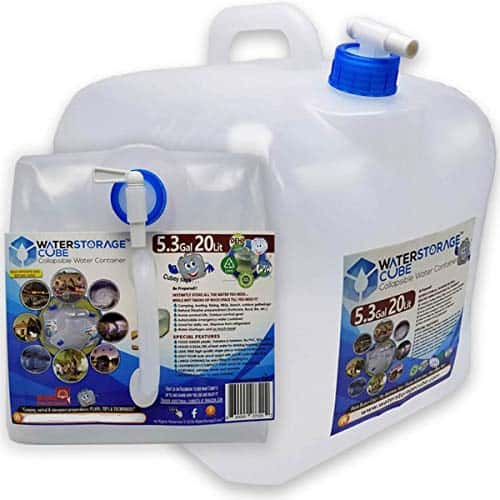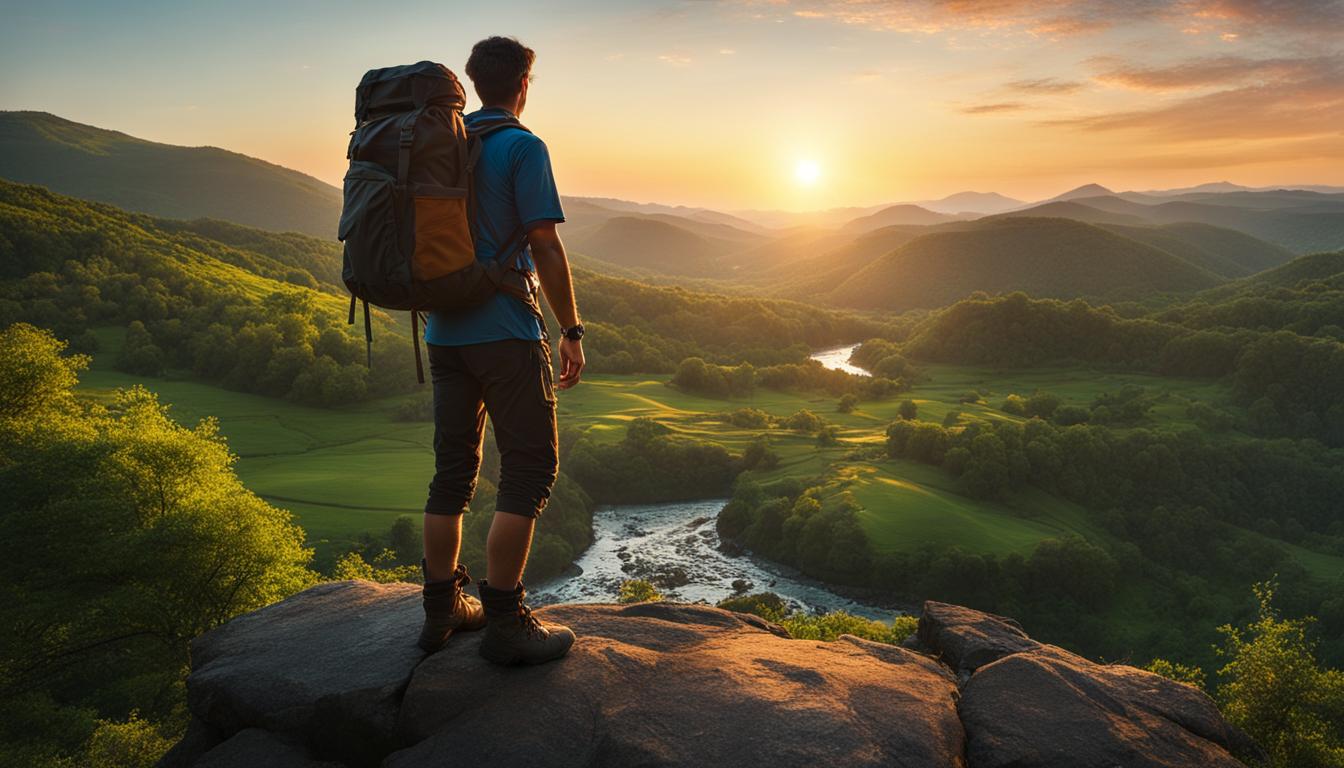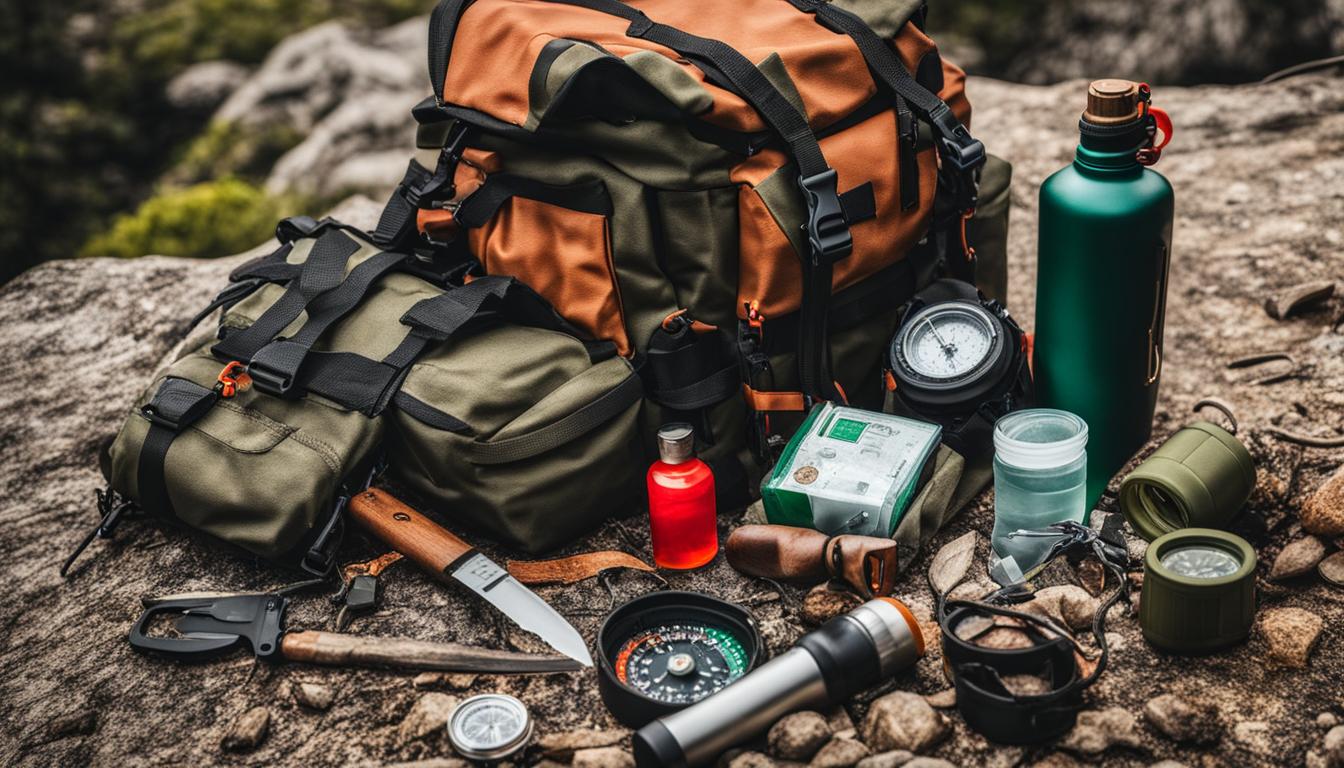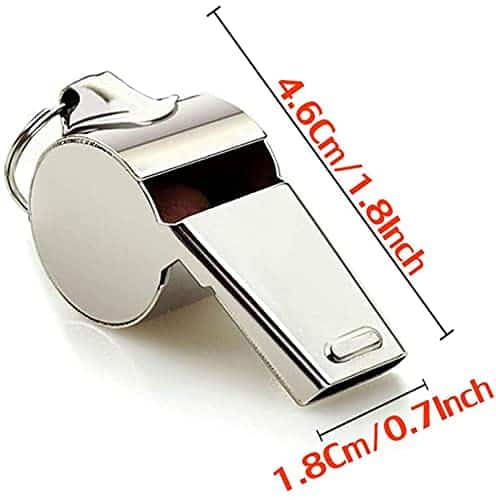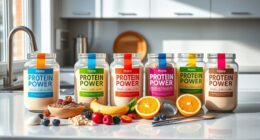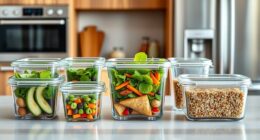Prepping for Clean Water: What You Need to Know
“Prepping” refers to the act of preparing for unforeseen events and circumstances. A key aspect of readiness is knowing how to secure clean water, as it is essential for survival. This article will delve into different methods you can use to gather and preserve clean water, so you are ready for any emergency situation.
Collecting Water from Natural Sources
When it comes to obtaining potable water, you have a number of different choices accessible to you. The collection of rainwater using a tarp or some other type of container is the method that is used most frequently. Condensation from your air conditioner unit or dew that forms overnight on plants are two other sources of moisture that might be collected.
You can install a water filtration system in your home if you have access to a natural body of water like a lake or stream and want to be sure the water is safe to drink before you use it. In addition to this, if you have access to snow, you may melt it down into drinkable water by heating it.
The fact that water may be obtained for no cost and in a convenient manner from natural sources is the primary benefit of doing so. When gathering water in such a method, though, you must make sure that your safety is your number one concern at all times. In order to guarantee that the water you have collected is fit for human consumption, it is imperative that you, if necessary, employ the proper water purification techniques and filter systems.
While transferring the collected water into storage containers, additionally utilize sterile gear and methods to protect against the possibility of infection.
Storing Potable Water for Emergencies
After you have gathered a sufficient supply of potable water, it is essential that you store it in an appropriate manner in order to avoid the water from being spoiled or contaminated over time. Use containers that were manufactured expressly for the purpose of storing potable water because these containers will have lids that have tight seals that will help keep pollutants out while maintaining the water’s freshness for a longer period of time.
Also, a rotation schedule should be established so that the older containers that are being stored are used first while the more recent ones are preserved as a reserve in case of any crises. When selecting containers for the long-term storage of potable water, it is important to make sure that the containers are made out of food-grade material, such as stainless steel or BPA-free plastic. This will help to ensure that the water does not become contaminated with certain chemicals, such as lead or phthalates, which may leach into the water over time if the containers are not properly sealed off from contact with these substances.
While keeping potable water, temperature is another consideration to make; because higher temperatures can lead to the formation of mold inside containers that have been held over time, you should make sure that your storage room is kept cold and has adequate ventilation.
Setting Up and Using Rain Catches: Water Collection and Storage for Beginner Preppers
When you’re trying to stay alive in a dangerous environment, having access to clean water is one of the most important things you can have. When you are just starting out as a prepper, it is possible that it will not be very safe for you to do so; nevertheless, if you take the appropriate precautions and make the necessary preparations, gathering and storing water is much simpler than you may believe.
Catching water from rain is a fantastic method to get started with collecting water in a sustainable manner. You can dependably store many gallons of water that will remain clean for years if you install rain catchers such as barrels or tanks. They can collect rainwater. You can fashion an improvised rain catcher that fulfills your requirements by using simple materials that are not difficult to get, such as a sheet of plastic or a netting made of mesh.
These catchers have the additional benefit of preventing any debris or insects from entering, which could potentially taint the water that is collected.
After you have established a rain catch and begun collecting water, the next crucial step is to store it. There are a variety of secure and efficient methods available for storing collected rainwater. For instance, using traditional methods like buckets or barrels may assist preserve a huge quantity of water in one area for an extended length of time. This is ideal for rainy days, when large quantities of water may need to be stored rapidly.
In addition, be sure to make the investment in some containers like as jugs or bottles for easy access in the event that it is required.
Putting up rain captures and making use of them is an excellent approach for beginning preppers to begin the process of gathering and storing water in an environmentally responsible manner. In the event that an unexpected crisis arises, you will be well on your way to having dependable access to drinking water if you have a few essential goods on hand.
Collecting Water from Natural Sources
If you are in a precarious position that requires you to survive, having access to clean water will be one of the most important things you will require. You can’t expect it to be very safe if you’re just starting out as a prepper, but if you take the right steps and make the right preparations, gathering and storing water is a lot simpler than you might think it is.
Gathering water from natural sources like springs, lakes, rivers, or streams can provide a great source of clean drinking water that is suitable for long-term usage. This type of water is known as “raw water.” You can begin by searching the area around you for possible water sources, and you should look for any signs of pollution before you start collecting water. Make sure that you also have the right filtration and purification equipment on available; this will assist in getting rid of any viruses or bacteria that may be present in the water that you have collected.
After determining the natural source of the water and collecting it in a secure manner, the next step is to ensure that the drinking water that has been kept is suitable for long-term consumption by storing it in containers that are both airtight and impermeable.
Consider making an investment in huge tanks or barrels that have been constructed expressly for the purpose of storing large quantities of water. These containers typically come with specialized lids or covers that help prevent the water from becoming contaminated over time. In addition, make it a habit to stockpile a sufficient amount of potable water at each stop; in the event of a crisis, during which access to the outside world may not always be possible, you will want to have an adequate supply on hand.
Using Filters for Water Purification
When you’re trying to stay alive in a dangerous environment, having access to clean water is one of the most important things you can have. It may not be very reassuring to you as a novice prepper, but if you follow the appropriate procedures and make the necessary preparations, gathering and storing water is a lot simpler than you might think it is.
When it comes to gathering and storing drinking water, the utilization of filters for the purpose of water purification should be an essential component of every prepper’s plan. Whether you are collecting water from natural sources or using rain catchers, having the necessary filtering systems in place can assist ensure that the water you have collected and stored is safe for use over an extended period of time.
Cloth filters, such as mesh netting or cheesecloth, are among the most straightforward approaches to the task of water collection. It is possible to utilize these as makeshift “strainers” by passing collected water through them numerous times. This will help to eliminate large things such as debris or insects that could potentially contaminate the stored liquid over time.
When dealing with smaller particles such as bacteria or viruses, it is possible that investing in specialized filters such as purifiers or chemical treatments would be required.
When it comes to collecting and storing drinking water in a sustainable manner, one of the most crucial steps for beginning preppers to do is to use filtration devices! In the event that you plan ahead and take some basic safeguards, you will be able to ensure that you have dependable access to clean drinking water in the event that you are forced to survive in an extreme environment.
Chemical Based Water Purification
When you’re trying to stay alive in a dangerous environment, having access to clean water is one of the most important things you can have. When you are just starting out as a prepper, it is possible that it will not be very safe for you to do so; nevertheless, if you take the appropriate precautions and make the necessary preparations, gathering and storing water is much simpler than you may believe.
The employment of chemically based treatments for the purpose of water purification can provide an efficient approach for ensuring that the drinking water you have saved is free from harmful contaminants such as bacteria and viruses. When it is not possible to bring the gathered liquid to a boil or filter it, these chemicals, depending on the type used, can give a speedy solution to the problem. This makes them excellent for use in time-sensitive emergency survival situations.
If you are looking into chemical-based treatments for the purification of water, make sure to review the contents list very carefully and always follow the recommendations that are supplied. This can assist ensure that your drinking water has been treated in a way that is both safe and effective! In addition, make sure to verify the date of expiration; treatments that have passed their expiration date may not be able to fully guarantee trustworthy outcomes.
If you are just starting out in prepping and want to be sure that the drinking water you store is fit for long-term consumption, chemical treatments are a wonderful alternative for you. You will be ready for any emergency that may arise if you have the appropriate instruction and an understanding of these therapies.
Purifying Water with Little or No Supplies
When you’re trying to stay alive in a dangerous environment, having access to clean water is one of the most important things you can have. It’s easy to feel overwhelmed when you first start prepping, but if you take the right steps and make the appropriate preparations, gathering and storing water is a lot less difficult than you would think it is.
In the event that you find yourself in a precarious scenario in which supplies are limited or nonexistent, there are still ways that you can purify the drinking water that you have collected, even if you have very few or no resources at your disposal.
When there are no other supplies available, boiling water is an efficient technique to purify it. When you bring water to a rolling boil and keep it at that temperature for at least one minute, you will eliminate the vast majority of pathogenic organisms that have the ability to cause illness. If you don’t have access to fuel or other sources of fire, another option is to use solar disinfection, also known as SODIS. This method involves placing the collected liquid in a plastic bottle and leaving it in the sunshine for a number of hours in order to make it safe for ingestion.
If you follow these straightforward steps, you’ll be able to purify the water you’ve collected for drinking even if you have very few resources or none at all. This will make it possible for you to survive in an emergency situation. But, if adequate planning and research are done in advance, obtaining dependable access to potable water shouldn’t be a problem.
Accessing Clean Drinking Water for Beginner Preppers: Identifying, Purifying, and Storing Water for Survival Situations
If you are just starting out in prepping, one of the first things you should focus on learning is how to get your hands on clean water in an emergency situation. In the event that you do not have access to a sufficient supply of clean drinking water, whatever other preparations that you have made will be far less successful.
There are many different ways to recognize potable water and keep it in a secure manner, and these methods vary according to the environment. After looking for water that is freely available, it could be required to treat the water that has been found with chemical disinfectants or filter systems in order to make it drinkable.
In addition to this, it is essential to drink plenty of water both as part of the standard routine for emergency preparedness as well as while actually experiencing an emergency. Maintaining a supply of water that can be used in the event of a standard emergency is something that should be done anyway, but it will be vitally essential to have clean water on hand in the event of a violent survival situation.
Simple Water Collection and Storage
The process of collecting and storing water may appear to be complicated at first, but if you understand the fundamentals, it is actually fairly straightforward. Choose a trustworthy source for your water supply, preferably one that ensures a steady supply that is unpolluted and unaffected by any contaminants. After you have determined the origin, the next step is to purchase some reliable storage containers.
Make sure that your containers have lids or coverings on them to prevent animals from getting into them, to prevent debris from falling into the water, and to limit the amount of water that is lost to evaporation.
When you need to store a significant quantity of liquid, it is a good idea to make an investment in collapsible containers that, when not in use, take up less room than traditional storage options. In addition, the use of preservatives is one way to assist extend the shelf life of the water you have kept. Today is the day to begin changing your home into an oasis by providing sufficient amounts of water.
Sustainable Water Collection: Harnessing the Power of Nature for Clean Drinking Water
The best approach to get access to safe drinking water in a way that is good for the environment and can be maintained over time is to collect water from natural sources. It requires either collecting rainwater through the use of rain barrels or fog nets, or drawing water from subsurface aquifers.
When water is collected in this manner, there is less of a requirement for additional treatment, which means that fewer new plants are required to supply populations with clean water. This method not only safeguards the natural world from the addition of more man-made structures, but it also contributes to the reduction of energy costs, maintains the health of watersheds by reducing the amount of water that is taken from them, and keeps wastewater from being released into the environment.
Water that is collected from natural sources is an efficient strategy for ensuring that future generations will have access to potable water that is free from contaminants.
Preparing for Emergency Water Supplies: The Importance of Safety Measures
When it comes to making preparations for emergency water supplies, the issue of safety should be given a lot of attention. Anyone who come into contact with the water that has been stored run the risk of jeopardizing their health if they do not have adequate information and trustworthy precautions in place.
It is imperative that appropriate safety procedures, such as purchasing protective clothing for individuals who gather big volumes of water and performing routine inspections of storage tanks for signs of wear and tear, are adhered to at all times.
In addition, having unrestricted access to huge quantities of water that have been kept could create possible health problems due to the possibility of contamination, which could put the health of the general population at risk during times of emergency. While dealing with substantial quantities of water, one must always adhere to the recommended safety procedures in order to keep everyone safe, especially in light of the current precarious situation.
Conclusion
The importance of having ready access to clean and drinkable water cannot be overstated, so any prepper’s plan must include making provisions for the availability of clean drinking water. We went over some important factors to think about when it comes to collecting and storing clean potable sources in this post on our blog. Some of these factors include gathering clean supplies from natural sources, selecting appropriate containers, establishing a rotation schedule, avoiding chemical contamination, and maintaining proper temperature storage conditions.
By keeping these considerations in mind, we can assure that our distribution channels will continue to function normally regardless of the unforeseen challenges that may come our way.
Preppers can have peace of mind knowing that their families will always have access to clean drinking supplies if they have taken the time to plan and prepare everything well. In these times of uncertainty, this provides all of us with a measure of calm.
Water in Emergency Situations FAQ
What is the importance of emergency water supplies?
Having a reliable source of clean drinking water is crucial in emergency situations where access to potable water may be limited or cut off. Without an adequate supply of water, it can be difficult to meet basic needs such as drinking, cooking, and sanitation, which can lead to serious health problems.
How much water should I store for emergencies?
The American Red Cross recommends storing at least one gallon of water per person daily for at least three days. This should include enough water for drinking, cooking, and sanitation.
How long can water be stored before it goes wrong?
Replacing stored water every six months is recommended to ensure it is still safe to drink. Water can last much longer if stored properly in a cool, dark place.
What are some ways to purify water during emergencies?
Boiling water for at least one minute is an effective way to purify water. Chemical disinfectants such as chlorine or iodine can also be used. Filtering water through a fine mesh or using a water filter can also help remove contaminants.
What are some common sources of emergency water?
Rainwater, lakes, rivers, and underground aquifers are potential water sources in an emergency. It is important to note that any water collected from natural sources should be purified before consumption.
Are there any safety precautions I should take when handling emergency water supplies?
It is essential to take appropriate safety measures when handling large amounts of water. This includes investing in protective gear for those collecting water, regularly checking storage tanks for wear and tear, and ensuring that stored water is properly sealed to prevent contamination.

